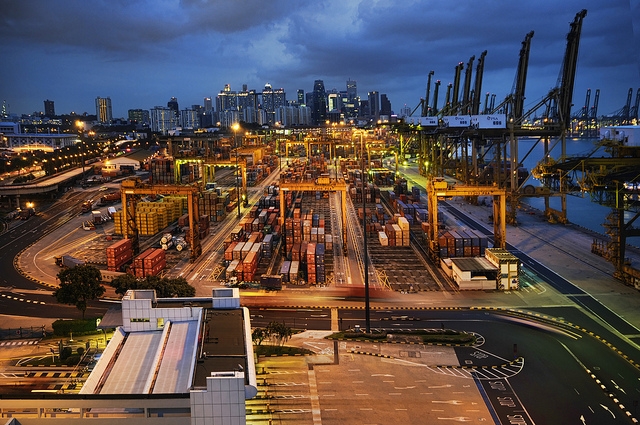
NODX surge may fizzle fast: HSBC
Non-oil domestic exports grew 9.0% yoy in December but a sustained performance is doubtful.
HSBC pinpointed the sub-sectors responsible for the bullish NODX growth -- ship structures and boats (+4,473% yoy) and pharmaceuticals (+39% yoy) -- and said these export gains were "lumpy" and "volatile".
The sound of caution also stemmed from the contraction of half the NODX markets, with the Eurozone expected to plunge deeper as mild recession rocks the debt-ridden region.
Here's more from OCBC:
The headline NODX growth was 9.0% yoy (+16.4% mom sa), beating Bloomberg consensus forecast of -1.2% yoy (+1.6% mom sa) and our house forecast of +2.5% yoy (+10% mom sa), and suggested that NODX could have troughed in Q4 2011 (at -16.3% yoy in October to be exact).
The December NODX data also suggests that Q4 2011 GDP growth could be revised up from the flash estimate of +3.6% yoy to +4.0% yoy, and the full-year 2011 GDP growth could also be revised higher to around 5% yoy (instead of the earlier 4.8% flash estimate) ceteris paribus. However, delving deeper into the NODX data reveals that the December jump was largely due to exports of structures of ships & boats (+4,473% yoy) and pharmaceuticals (+39% yoy), of which the first tends to be quite lumpy in nature and the latter is traditionally volatile.
Therefore, there remains some lingering concern that this spurt of NODX strength may not be sustained into H1 2012. Notably, electronics exports remained weak, contracting by 4.6% yoy in December after a marginal expansion of 0.1% yoy in November 2011.
In particular, PC parts, diodes and disk drives exports shrank in December, suggesting there is little to signify light at the end of the tunnel for the electronics industry. In addition, 5 of the top 10 NODX markets export growth also remained in contraction territory in December.
The top contributor to the NODX expansion in December 2011 was the EU 27 (+12% yoy), but the German economy already contracted around 2.5% in Q4 2011 and the Eurozone is likely to see at least a mild recession in 2012 amid the sovereign debt crisis, bank deleveraging and fiscal austerity measures. On a seasonally-adjusted basis, non-oil retained imports of intermediate goods (NORI) also contracted by S$1.124 bilion to S$5.681 billion.
We still expect Q1 and H1 growth momentum this year to be fairly choppy as external demand from the advanced economies is likely to be sluggish, with event risks mainly driven from Europe, even though our baseline scenario is one of an European muddle-through and China slowdown rather than a global hard landing.
One consolation is China’s Q4 2011 GDP growth, which also beat market expectations to grow at 8.9% yoy (+2.0% qoq), points to a relatively modest slowdown and that domestic demand is still resilient. Our forecast for China’s GDP growth for this year is 8.5%. EDB’s 2012 manufacturing investment outlook also looks relatively sanguine, forecasting $13-15 billion versus 2011’s $13.7 billion.
Company feedback suggested that American and European companies have better balance sheets and cash positions today, and are still targeting the Asian growth story beyond China and India. So while the electronics and semiconductors industries still have little visibility on when output growth may pick up, Singapore is well-positioned to harness Asia’s growth, intra-regional trade, and demand for consumer (eg. infant nutrition) and industrialization (urban solutions) products.
























 Advertise
Advertise






